NOTE: I upgraded to the latest version of WordPress this morning. But now it appears readers are unable to leave comments because no “Reply” button is appearing. Will work on this….please be patient… -PG
=============================
Change in the climate debate? Climate models start converging towards reality
By Frank Bosse and Prof. Fritz Vahrenholt
[Translated, condensed by P. Gosselin]
On many occasions we have brought up the discrepancies between observed global data and the values of the latest IPCC climate models (CMIP5) – see here and here. The model values simply diverged well above the observations. A chart by Roy Spencer made this clear:
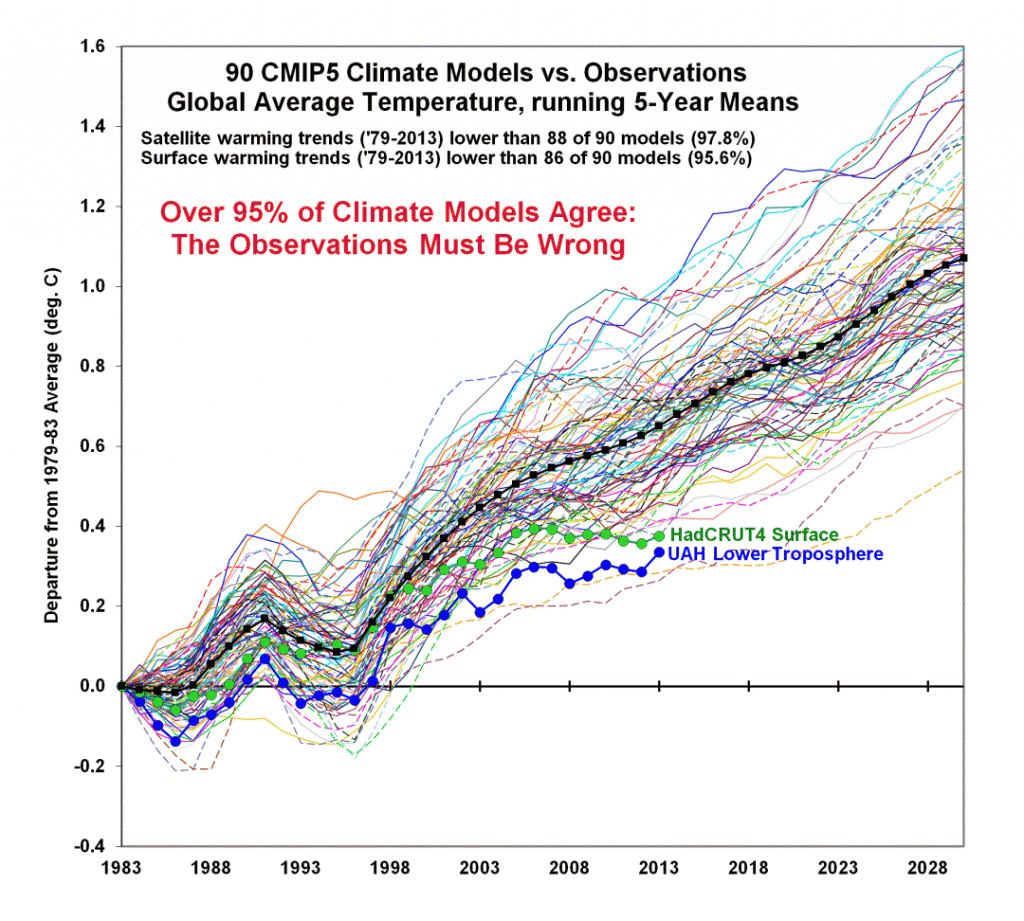
Figure 1: The deviation of model values from satellite observations up to 2013, Source: Roy Spencer.
Recently Thomas Mauritsen and Björn Stevens, a clouds and aerosols modeling expert of the Max Planck Institute for Meteorology in Hamburg, examined the matter. In a very recent paper appearing in Nature Geoscience (hereinafter MS15) titled “Missing iris effect as a possible cause of muted hydrological change and high climate sensitivity in models“, they took up the actual situation (a somewhat difficult to understand press release on this can be read here).
1) Apparently the models overreact to the greenhouse gas effect. Recent papers also have found from the observations a significantly lower value for forcing. The climate sensitivity (ECS) for a very long-term period after an increase in greenhouse gas is determined to be on average 3.3°C of warming while the observations indicate a value of about 2°C.
2) The global hydrological cycle is not taken correctly into account in the models (too small).
There’s also another phenomenon: According to the models, the troposphere in the tropics was supposed to warm up much more than at ground level. But this is not being observed, and we’ve written about this in an earlier post “Houston, we have a problem: We can’t find the hot spot“.
Here the authors searched for an explanation for the discrepancies. Perhaps a cooling effect was missing in the models. They found an explanation: an old hypothesis from Richard Lindzen and his colleagues from 2001: The earth has an “iris”, a negative feedback where more heat is released when there is more warming than when the temperature is cool. This mechanism, according to Lindzen, acts in the tropics and in the subtropics. It is illustrated as such in the paper:
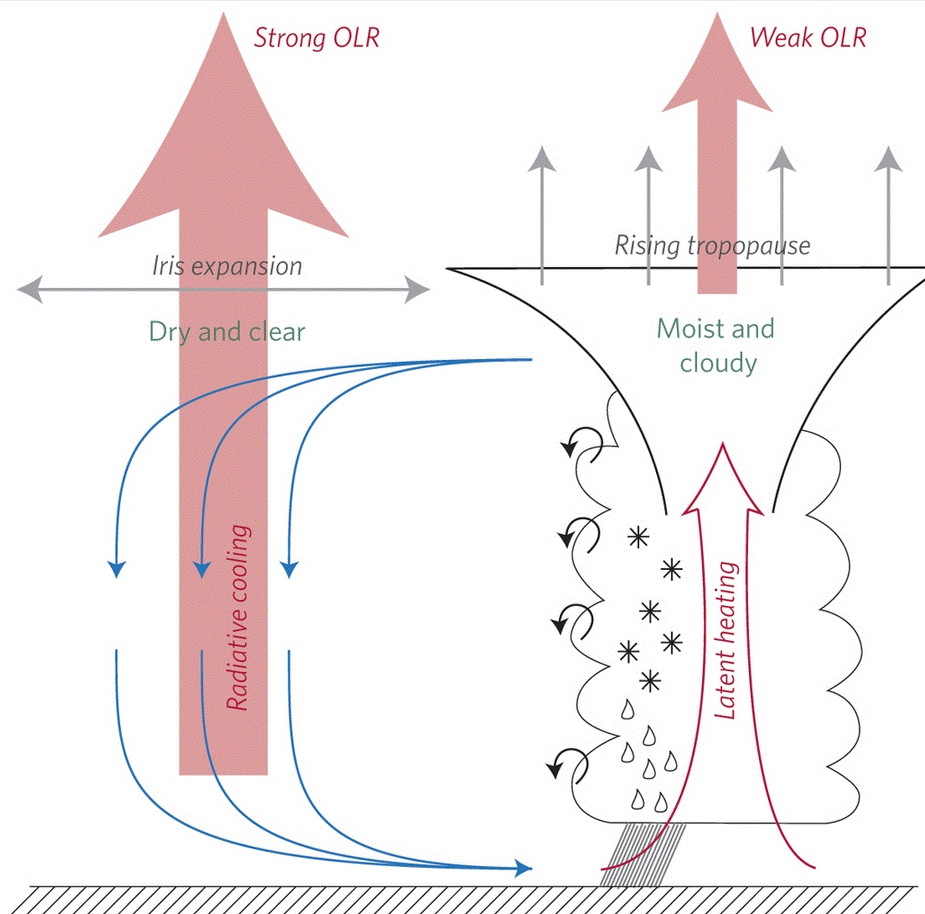
Figure 2: At higher temperatures there are more thunderstorms over the ocean and the area without high level clouds (dry and clear) expands further and thus allows more heat to radiate off into space (strong OLR) than when temperatures are lower, i.e. when the iris is smaller. Source: Figure 1 from MS15.
This “self-regulation” of the earth’s temperatures proposed by Lindzen of course was rejected by “mainstream” climate science. Chambers et al. wrote in the Journal of Climate 2002:
As a result, the strength of the feedback effect is reduced by a factor of 10 or more. Contrary to the initial Iris hypothesis, most of the definitions tested in this paper result in a small positive feedback.”
Kevin Trenberth and colleagues rejected the iris-theory in the Geophysical Research Letters in 2010:
…and their [Lindzen et al.] use of a limited tropical domain is especially problematic. Moreover their results do not stand up to independent testing.”
The authors of the latest Nature article obviously had not been impressed by Trenberth’s claim, and made the effort of integrating Lindzen’s iris effect into an advanced model. The result is somewhat surprising.
The Tropical Hot Spot
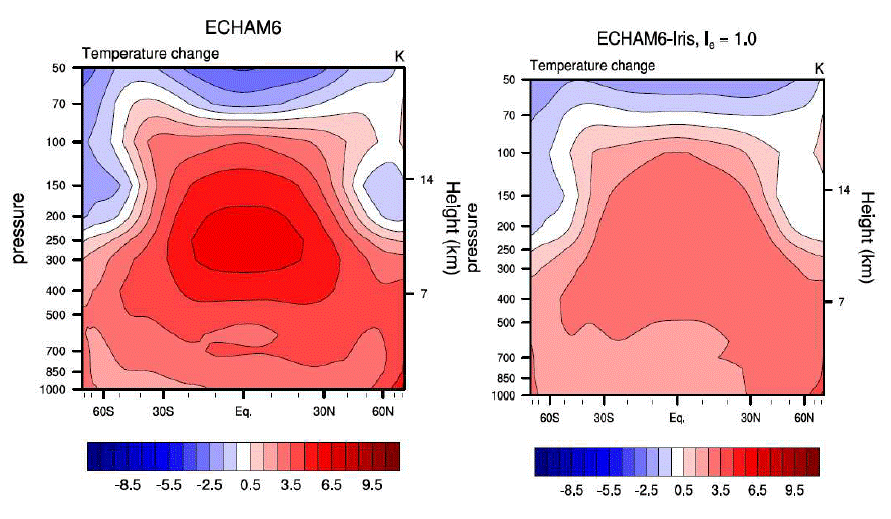
Figure 3: The temperatures in the atmosphere according to the models, Source: Figure S7 from MS15.
The increase in the tropical temperature trends between 7 and 14 km elevation in the model without the iris (Figure 3 left) and with the iris (right). The modeled hot spot with profound effect at about 10 km and above has disappeared…which is very much like what the observations have been telling us:
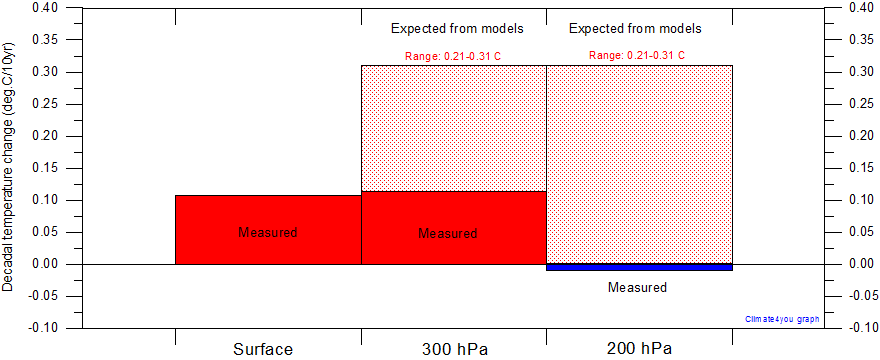
Figure 4: The hot spot in the models without the iris and the observations. Source: “Climate4you“. The 300 hPa atmospheric pressure corresponds to an elevation of approx. 8 km, the 200 hPa approx. 10 km above sea level. The measured trend (dark red or blue), the modeled trend in the model mean without iris is dotted red.
The impact of the iris effect on EC
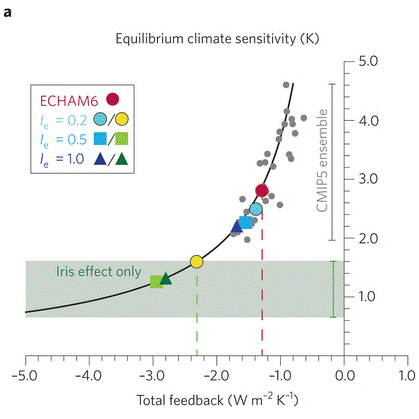
Figure 5: Crossplot of the ECS with negative effect of iris as temperature rises. The red point is the ECS of the model without iris. The blue plots are the values for the ECS in various strengths of the Iris. Source: Figure 3a of MS15.
The iris shifts the ECS of the used models from 2.81 to 2.21. That’s 22% less sensitivity with respect to the warming effect by greenhouse gases. Also the discrepancy in the hydrological cycle (basically the increase in precipitation due to warming) could be resolved by taking the iris into account.
Even when the impression has been given here from time to time that we distrust models, we point out that precisely in climatology models can be very useful when they are fed with all the right information. We are not able to experiment with the atmosphere and so we have to rely on computers. It is essential that the models accurately reflect reality and do not produce a fictitious world that supplies catastrophe scenarios.
Climate models are extremely complex, and thus it is all the more critical that their programming be clean and that all the possible physical factors be correctly taken into account. The latest paper shows that modeling has taken a step in the right direction. It shows 22% less climate sensitivity due to the iris component.
Not everyone was happy to hear this news. Kevin Trenberth was quoted saying the following words (translated from the German):
The paper is poorly written and misleading. It wasn’t necessary to blow the iris horn.”
Trenberth seemed almost infuriated:
The authors even wrote it in the damn title.”
What fear has suddenly gripped the “climate establishment”? Could it be that among policymakers the word is out that the climate catastrophe has been called off?
Björn Stevens’ research results may go down as being the turning point in the history of climate science debate.





It still does not model the real atmosphere or the real eco system. It’s just playing with their playstation to find an adjustable parameter which will allow their models to appear more useful.
They are useless
A strong negative feedback mechanism is quite evident in the paleo data.
Clearly there is an upper and lower temperature limit that is quite difficult to break through, else there would have been runaway warming in the last few interglacials. It also underscores how meaningless a number like ECS is, if it can be radically different in an ice-age vs. the top of an interglacial.
If true, this is a death knell for CATASTROPHIC AWG, so it’s hard to imagine the ecoterrorist gate-keepers letting this get through peer-review.
Still not quite time to sell those carbon credits…
1) Apparently the models overreact to the greenhouse gas effect. Recent papers also have found from the observations a significantly lower value for forcing. The climate sensitivity (ECS) for a very long-term period after an increase in greenhouse gas is determined to be on average 3.3°C of warming while the observations indicate a value of about 2°C.
The German original makes this a little clearer by including “from models” here:
is determined from models to be on average 3.3°C of warming while the observations …
Very nice to see Lindzen vindicated, Kevin destroyed, and two remaining rational people in Hamburg of all places. (Hamburg is generally the NYC of Germany, politically)
Looking Back to Next Weeks Forecast
ABC tv, Australia 1999
Perhaps some day in the dim future it will be possible to advance the computations faster than the weather advances and at a cost less than the saving to mankind due to the information gained. But that is a dream.
Lewis Fry Richardson, 1921
The great advances in weather forecasting that have taken place during the past 100 years owe a great deal to a British physicist, Lewis Fry Richardson (1881-1953).
Will a weather forecast or a climate prediction ever become perfect every time?
I asked this question of Mr Barrie Hunt, who heads the Climate Modelling program at CSIRO Atmospheric Research.
‘Improving observations and computing power will improve forecasts, but, ultimately, chaos reigns,’ Mr Hunt says.
Despite the massive leaps in knowledge, observations and computing throughout the twentieth century, it is the mathematical approach to developing a weather forecast, pioneered over eighty years ago, that underpins modern-day weather forecasts and climate assessments.
http://www.abc.net.au/science/slab/forecast/story.htm
That was back when the science was settled.
Test – commented from admin site
I’m stumped. Can’t figure out why no “Reply” button is appearing for reader comments. This comment only appears because I’ve written it in Administrator mode. ??